Passive Investing Australia – How to Passively Invest in Stocks 2021
Please note that we are not authorised to provide any investment advice. The content on this page is for information purposes only.
Please note that we are not authorised to provide any investment advice. The content on this page is for information purposes only.
Passive investing is a common portfolio strategy that involves buying or selling risk-optimized and diverse assets for long-duration investment horizons and it has been a quite popular strategy in the Asia-Pacific region as well as Australia. Passive trading usually involves very minimal trading in the market. In this regard, passive investing can be seen as the opposite of day-trading. In short, passive investment is a less complicated and inexpensive method of investment. Some common examples of passive investing are investments in index funds, dividend stocks and REITs (Real Estate Investment Trusts).
We created this thorough brokerage review for investors who might be interested in passive investing strategies in the Australian region. Below you will find well-researched information regarding passive investing and some brokerage solutions that can help you get started with trading in Australia as well as their pros, cons and fee structures.
Table of Contents
Having the right brokerage is always a crucial aspect of investing. We recommend eToro which was established in 2007 and has been serving millions of satisfied clients since then. You can get started with eToro in less than 5 minutes by following these steps.
Even if you are planning to buy an asset and hold it for a long time without too much trading you can still accomplish this strategy through various assets such as CFDs and ETFs offered by brokerage platforms. This might even be beneficial since you won’t incur as many trading fees as day traders do. Additionally, CFDs provide easy access to short-selling orders which might also be a strategy for the long term if you have good reasons and enough solid insight for such a position.
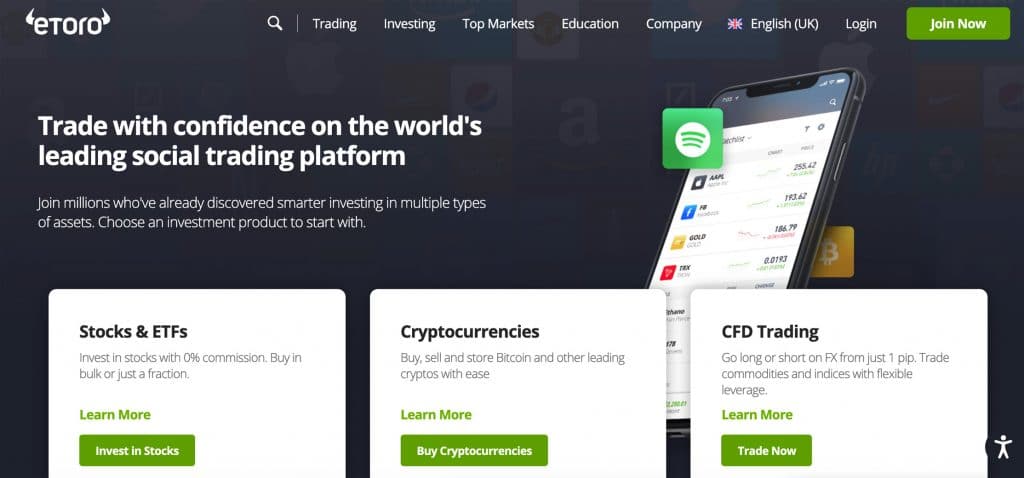
eToro is one of the world’s leading social trading platforms that offer to invest in cryptocurrencies, forex, commodities, indices and stocks. It is an easy-to-use and straightforward platform and has a great mobile trading app. You can conveniently explore and analyze various CFDs through this platform, thereby buying and selling underlying assets will be very efficient.
You can build your passive investing portfolio and enjoy benefits not offered by most exchanges, such as near-immediate execution of market orders and no deposit fees. eToro offers easy investments in CFDs, stocks, ETFs, and forex pairs and additionally, eToro’s popular investor program identifies savvy, talented, and responsible traders who can share their skills and knowledge and allows others to follow and mimic their trades.
As far as the security and privacy of eToro are concerned, it is a safe and well-regulated platform. It was founded in 2007 and is licensed in many top-tier jurisdictions. Furthermore, being a regulated financial services company, they are monitored and audited regularly. eToro is trusted by more than 15 million traders in more than 170 countries.
Besides, eToro has recently collaborated with FinTech Acquisition Corp. for becoming a publicly renowned trading company. Once this is done, the company will be enlisted in the NASDAQ stock exchange, which can bring further transparency and regulations to the successful brokerage company.
eToro ensures that clients’ funds are kept secured in tier 1 banks. All of the personal information is secured via SSL encryption, thereby ensuring users’ privacy. In this regard, your privacy and safety will be guaranteed under their security and privacy measures.
Opening your account on eToro is free of cost. Besides, they don’t charge any ticketing or management fees. Therefore, investments in stocks and trading can be considered commission-free on this platform. eToro makes most of its revenue through bid/ask spreads of the assets. Other than this, you only have to pay a small withdrawal fee of $5, which didn’t even exist before, and FX rates are applied only to non-USD withdrawals and deposits. Furthermore, eToro accepts deposits in Australian Dollar (AUD) which can be very convenient for investors and traders in this region.
| Fee Type | Fee Amount |
| Commission Fee | 0% |
| Deposit Fee | $0 |
| Withdrawal Fee | $5 |
| Inactivity Fee | $15 (Monthly) |
Pros
Cons
67% of retail investor accounts lose money when trading CFDs with this provider.
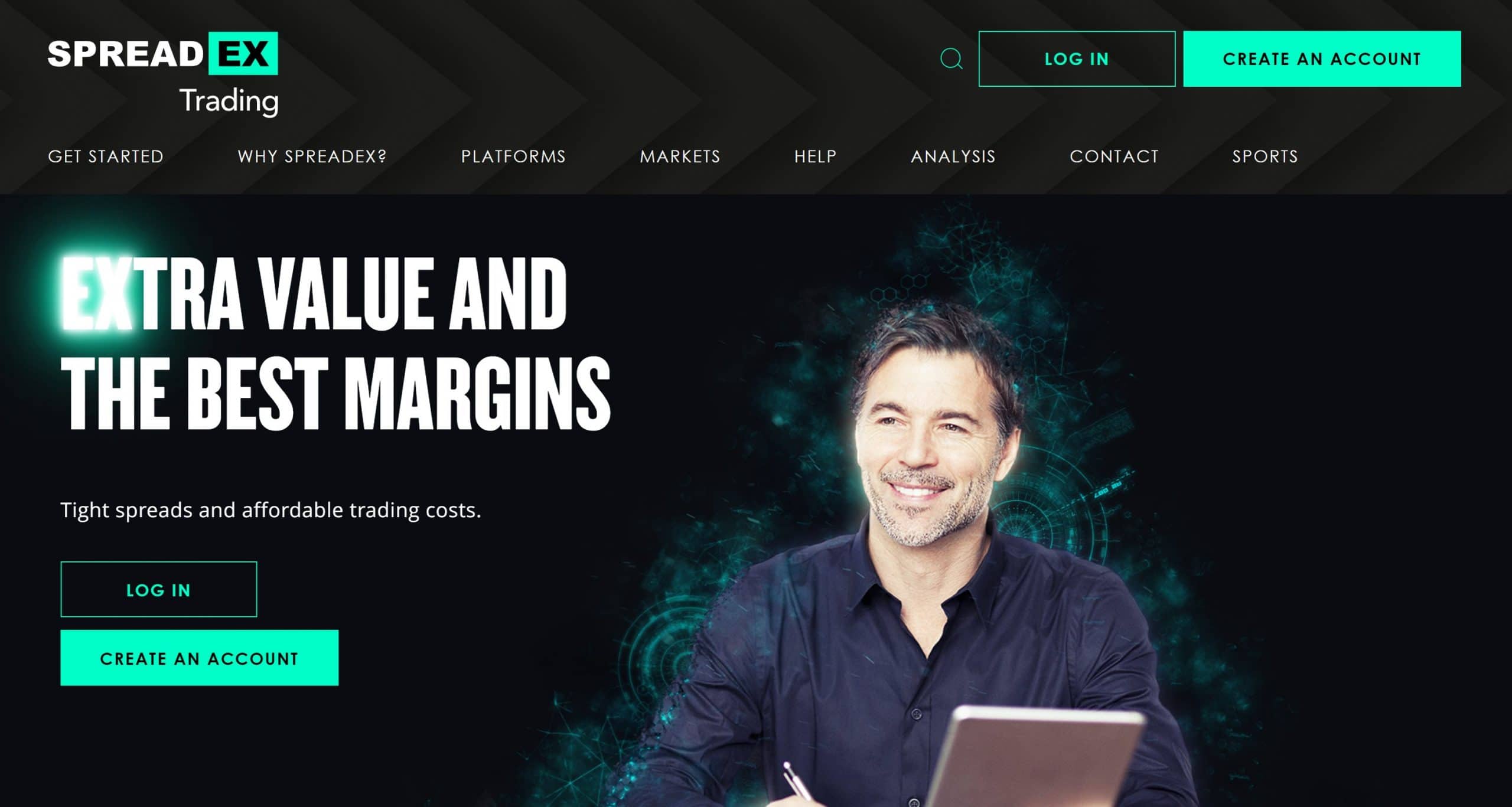
SpreadEx is a British-based company offering financial spread betting. Additionally, the company is also famous for sports fixed-odds betting and sports spread betting. SpreadEx was listed in the Sunday Times as the UK’s top 100 most profitable companies, for three years in succession. SpreadEx has managed to expand its services in more than 15 different countries globally.
If you are wondering where to get started with passive investing, SpreadEx can be an excellent platform for this purpose as they offer great index-based CFDs. SpreadEx also offers great deals in small-cap stocks, including AIM (Alternative Investment Market) assets with a market cap of £5m+. Moreover, profits gained from spread betting can be free from Capital Gains Tax and Stamp Duty in many countries which can be very beneficial.
SpreadEx has an excellent track record and has been a pretty stable brokerage company so far. It is authorized and regulated by FCA (Financial Conduct Authority), a government body regulating financial service firms in the United Kingdom. They have been proliferating for the past few years but still don’t accept US-based clients.
Funds are safeguarded in a segregated account according to the FCA client money rules. SpreadEx is also a member of FSCS( Financial Services Compensation Scheme) which can be relieving for thorough clients. This organization compensates eligible investors up to £20,000 in case of bankruptcy. Therefore, SpreadEx appears to be a trustworthy and regulated platform overall.
SpreadEx deals with commodities, forex, stocks, cryptocurrencies, indices, ETFs, Bonds, and CFDs. Funding of SpreadEx accounts can be done via credit or debit cards, cheques, or wire transfers. The platform is overall user-friendly and asset variety is satisfactory. The company also offers sports betting products which may be interesting for some clients but is completely out of the scope of passive investing.
| Fee Type | Amount |
| Commission | $0 |
| Withdrawal Fee | $0 |
| Deposit Fee | $0 |
| Inactivity Fee | $0 |
Pros
Cons
67% of retail investor accounts lose money when trading CFDs with this provider.

Easymarket is another great multi-assets trading platform with more than 200 assets. It uses the latest technology and innovative tools to undo a losing trade within 1, 3, or 6 hours, which is an innovative feature. By paying a premium for this feature, you can undo a trade if the market moves against your direction in the next, for example, 60 minutes. It offers another unique tool, thereby allowing you to freeze the price you see, giving you the advantage of a few seconds to carry out your trade. In short, it is a powerful trading tool with innovative features. easyMarket is allegedly used by institutional traders to set up hedges against volatility.
easyMarket is regulated and supervised by Australian securities and ASIC, an investments commission regulatory body. Also, it is regulated by Cyprus Securities and CySec, an Exchange Commissions. This trading platform is regarded as an average-risk trading platform, gaining an overall trust score of 82 out of 99. easyMarkets doesn’t trade publicly and doesn’t operate a bank. It is authorized by a highly trusted tier-1 regulator, an average trusted tier-2 regulator and a low tier-3 regulator.
easyMarkets spread starts from 0.9 pips. It is free and has no account fees, deposit fees or withdrawal fees. easyMarkets have well-developed trading software with desktop and mobile versions. Additionally, the platform offers popular trading software Meta Trader 4 and Trading View.
Besides, good learning resources, trading software, mobile apps and sufficient charting tools, easyMarkets offer innovative features such as “price freezing”, “order cancellation after markets moved” and “guaranteed stop-loss orders”. These features can be very interesting to explore for traders however we suggest ample testing before coming to conclusion with their usefulness and efficiency. easyMarkets also offers a financial instrument called ASX based on the Australian Dollar which aims to track the Australian Stock Market index ASX.
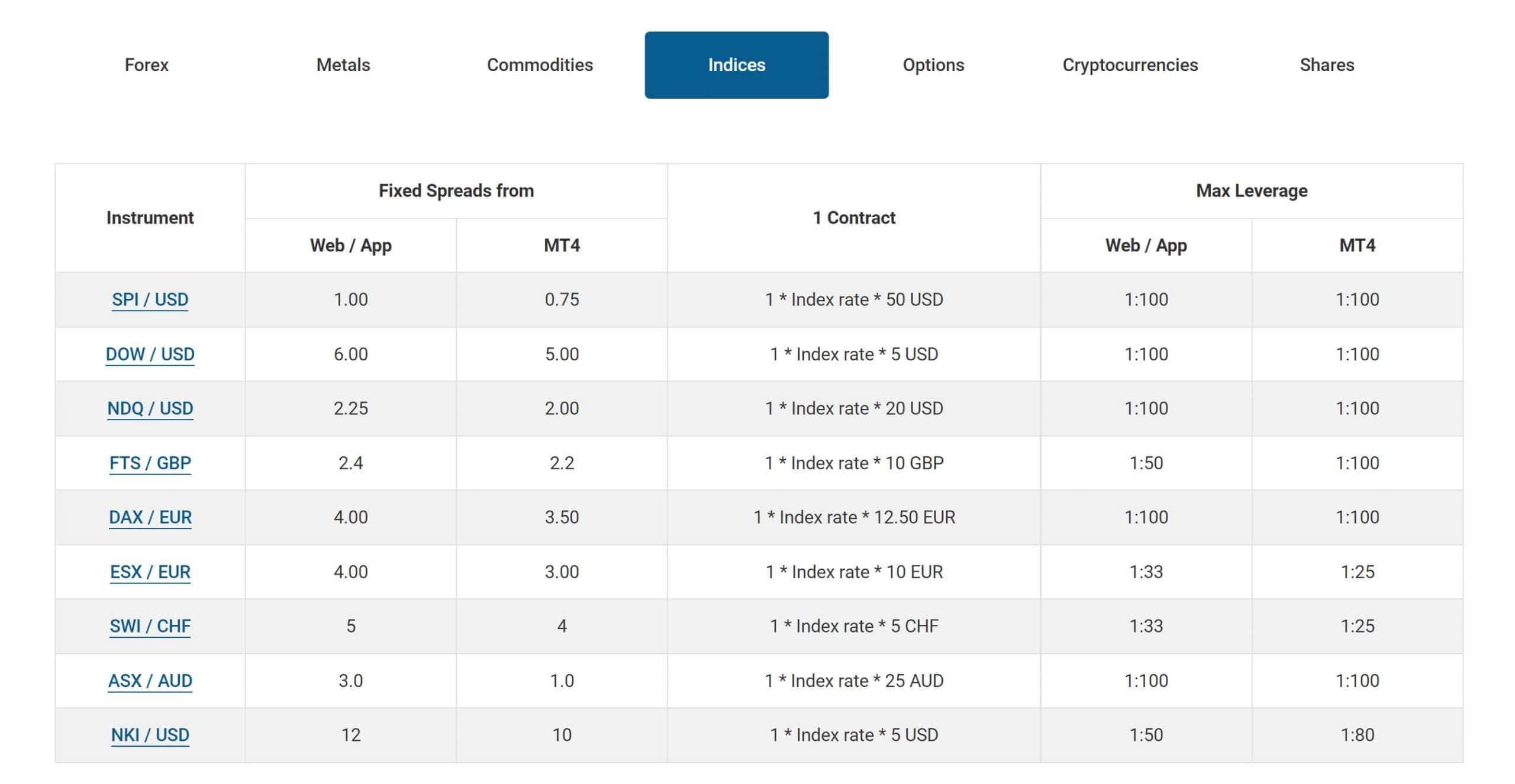
| Fee Type | Fee Amount |
| Commission Fee | 0% (for spread only account type) |
| Deposit Fee | $0 |
| Withdrawal Fee | $0 (applies to only certain methods) |
| Inactivity Fee | $15 per month (after 12 months of inactivity) |
Pros
Cons
67% of retail investor accounts lose money when trading CFDs with this provider.
If you are confused about different fees charged by different brokers, here is a fee comparison table between eToro, SpreadEx and easyMarkets.
| Broker | Commission | Deposit Fee | Withdrawal Fee | Inactivity Fee |
| eToro | 0% | £0 | £5 | £10 monthly (after 12 months inactivity) |
| SpreadEx | 0% | $0 | $0 | $0 |
| easyMarkets | 0% | $0 | $0 | $25 twice a year (after 12 months inactivity) |
Creating passive income streams is one method to increase your earnings, and, in the long run, this may help you build wealth and attain financial independence. Passive income can be generated in various ways, including through financial investments, real estate, and even art and royalties. Below, we will discuss a few sophisticated methods to make passive income through passive financial investments.
A stock is an instrument that indicates the bearer owns a certain percentage of the issuing firm. Stock is issued/sold by businesses to raise cash to meet the operational cost of their companies. While some trading strategies focus on buying and selling stocks tens or even hundreds of times a day, passive investing would focus on carefully making long-term oriented purchases and holding them for longer periods.
The quantity of shares a person holds concerning the number of outstanding shares determines ownership. For example, if a business has 1,000 shares and one individual owns 100 of them, that specific person has a claim to 10% of the corporation’s earnings and assets. There are two types of stocks: Common Stock and Preferred Stock. Stocks are the cornerstone of virtually every portfolio and are purchased and sold mainly on stock exchanges, but private trades are possible. They have traditionally surpassed most other assets over time.
A contract for differences (CFD) is a contractual arrangement that pays the difference between the open and closing trade settlement prices. CFDs are primarily popular in Forex and commodities because they allow investors to trade the direction of assets. CFD traders can speculate on whether the price will rise or fall. But it’s also possible to buy a CFD and hold it for longer periods.
Traders who anticipate an upward price movement will purchase the CFD, while those who expect a negative price can sell outright (short-selling). In both cases, price deviation from entry price will define the profits. If the price of an asset rises, the buyer of a CFD will offer their position for sale. The change between the buy and sale prices is added together to get the net difference. The investor’s brokerage firm settles the net difference, representing the trades’ profit or loss.
ETFs (Exchange-Traded Fund)
An exchange-traded fund (ETF) is a collection of assets traded like stocks on an exchange. On the other hand, mutual funds can only be traded once a day after the market closes. ETF share values fluctuate throughout the day as the ETF is purchased and sold. ETFs can consist of various assets, including equities, commodities, and bonds; some are exclusive to the United States, while others are global.
ETF is a form of investment that consists of several underlying assets rather than just one, unlike a stock. ETFs are a popular choice for diversification since they contain a variety of assets. When we compare it to buying equities separately, ETFs have lower expense ratios and lower broker commissions as well. All these characteristics make ETFs very suitable for passive investing. While ETFs focusing on indices like S&P 500, Nasdaq and Russell 2000, traders in Australia might prefer local indices such as Australian Securities Exchange (ASX), ASX 200 or ASX Midcap 50.
Passive investing can be an efficient strategy to take directional bets on the markets for a very long duration. Below you can see a few of the best ways that you can use to do passive investing.
One of the simplest methods for investors to create a passive income stream is with the help of dividend stocks. If a publicly-traded company makes a profit, a portion of that profit can be distributed among the shareholders in the form of a dividend. Stockholders can either keep the money or reinvest it by purchasing additional shares.
Passive income can be eligible for capital gains tax, which is taxed at a lower rate than ordinary income tax, making it more appealing; nevertheless, dividends do not fit within the IRS’s definition of passive income and are usually taxed at regular income tax rates. In Australia, most passive income streams, including dividends, will be taxed simply based on your marginal tax rate.
It is a modern trading technique that can be used by skilled traders. CFDs do not involve the delivery of actual commodities or securities. A CFD investor never truly owns the underlying asset; instead, they earn money depending on the asset’s price fluctuation. Instead of purchasing or selling actual gold bars, a CFD trader might merely bet on whether the cost of gold will rise or fall.
CFD trading has some advantages, including lower margin needs, more accessible access to worldwide markets, no specific shorting or day trading regulations etc. On the other hand, high leverage multiplies losses as much as it does win and spreads-at-entry can be costly when significant price changes do not occur. Indeed, to safeguard ordinary investors, the European Securities and Markets Authority (ESMA) has imposed limits on CFDs.
An exchange-traded fund (ETF) is a type of investment that attempts to imitate the performance of the whole stock market or a specific sector or trend. ETFs mimic the holdings of a particular index, which is a collection of tradable assets believed to be indicative of a specific market or segment. ETFs, like equities, trade on an exchange and can be bought and sold by investors at any time throughout the trading day.
There are many reasons why ETFs are highly preferred passive investing instruments and luckily there are many CFD brokers who offer ETFs through CFD products. ETFs have lower expense ratios, more transparency, and are more tax-efficient than actively managed mutual funds. On the other hand, passive investing through ETFs can be susceptible to overall market risk, lack flexibility, and be highly weighted towards the most valued equities in the basket in terms of market capitalization.
It’s no surprise that passive investing is one of the most discussed aspects of personal finance. Passive investing may help you achieve your financial goals without frequent buy/sell orders which can mean higher trading fees, losses incurred via spreads or resources spent on numerous trading orders. In a nutshell, passive investing is significant because it provides financial stability by focusing on long-term investment horizons with optimal risk management.
Passive investing can be a much more efficient task than active investing. If you participate in index funds, you don’t have to research and pick individual stocks which can be very time-consuming. Furthermore, buy-and-hold investors can often postpone capital gains taxes until these assets are sold. Usually, active investors spend many hours per week analyzing charts, news, markets and any other factor that may affect the prices of assets being traded. Passive investing requires a lot fewer resources since it can be as simple as buying an index EFT and holding this financial asset for a very long time.
Fees are usually inevitable in investing in one way or another, but that doesn’t mean you have to overpay for them. When things are good, few individuals pay much attention to their investing expenditures, but what they don’t know is that those small fees may add up and eat away at their returns.
Fees for actively managed accounts, whether it’s a mutual fund or a brokerage account, are generally a lot more than passive investments or those without a human actively making decisions. According to Morningstar, the average cost for actively managed funds is 1.2%, whereas the average fee for an electronically traded fund (ETF) is 0.44 %. That is almost a 300% difference in the fees between two similar funds. Moving to a low-cost fund, such as an index fund that tracks certain indexes or an ETF, is a simple method to reduce the amount you spend on fees.
Passive investing may be taxed differently compared to active investment operations and the tax laws usually favour buy and hold positions. Tax authorities often divide taxable income into two categories: “ordinary income” and “realized capital gain.” Earnings, rental income, and interest income from loans, CDs, and bonds are all examples of ordinary income (except for municipal bonds).
A realized capital gain is money earned from selling a capital asset (stock, real estate) for a better price than you paid for it. If the value of your asset increases but you don’t sell it, you haven’t “realized” your capital gain and hence owe no tax. An Important point to know is long-term realized capital gains are usually taxed at a lower rate than regular income. This means that investors have a strong incentive to keep valued assets for at least a year and a day to qualify for more preferred tax rates and this is a major factor for many investors to opt-in for passive investing.
While there are many advantages of passive investing, there are also risks associated with it. We will explain some of these passive investing risks and how they affect an investor.
Investors in passive funds are locked into a specific index or predefined set of investments with little to no variation; as a result, no matter what happens in the market, they are locked into those holdings, lowering their potential to earn more as market changes.
While most passive investing friendly assets such as index EFTs are usually liquid in a major downturn these assets will usually be very difficult to trade at a fair price. When the markets get rough and liquidity dries up it can be very difficult and painful to continue to cling to passive investing strategies for prolonged times. Additionally, it will likely also take a very long time for the markets and associated financial assets to recover after a major crisis. This point reminds us of the importance of investing only with amounts that investors are okay to lose so those waiting periods don’t feel as intense.
It is possible to foresee financial markets when there is a clear trend, but every now and then markets get hit by something even the brightest minds of a generation don’t actually see coming. The black swan is a very unlikely event that occurs without anyone anticipating it and affects the financial markets profoundly. This phenomenon was very nicely elaborated by NYU Professor Nassim Taleb.
When black swan events occur, these usually render even the most sophisticated models useless. Though, we must also rely on intuition, common sense, and simplicity, when sophisticated models fail it can be very difficult to forecast the future of financial markets. Expansion, continuous checking, rebalancing, and other attempts and proper methods are less likely to fail us when market conditions change and these can’t be done in passive investment strategies.
In this section, we will look at the simple steps involved with making Small Caps investments on a well-established platform like eToro.
Opening a brokerage account can seem like a harder task than it actually is. eToro offers free account registration and you can have a brokerage account on the platform within minutes. Just type “eToro.com” into your browser, press “Join Now” and fill in the necessary details.
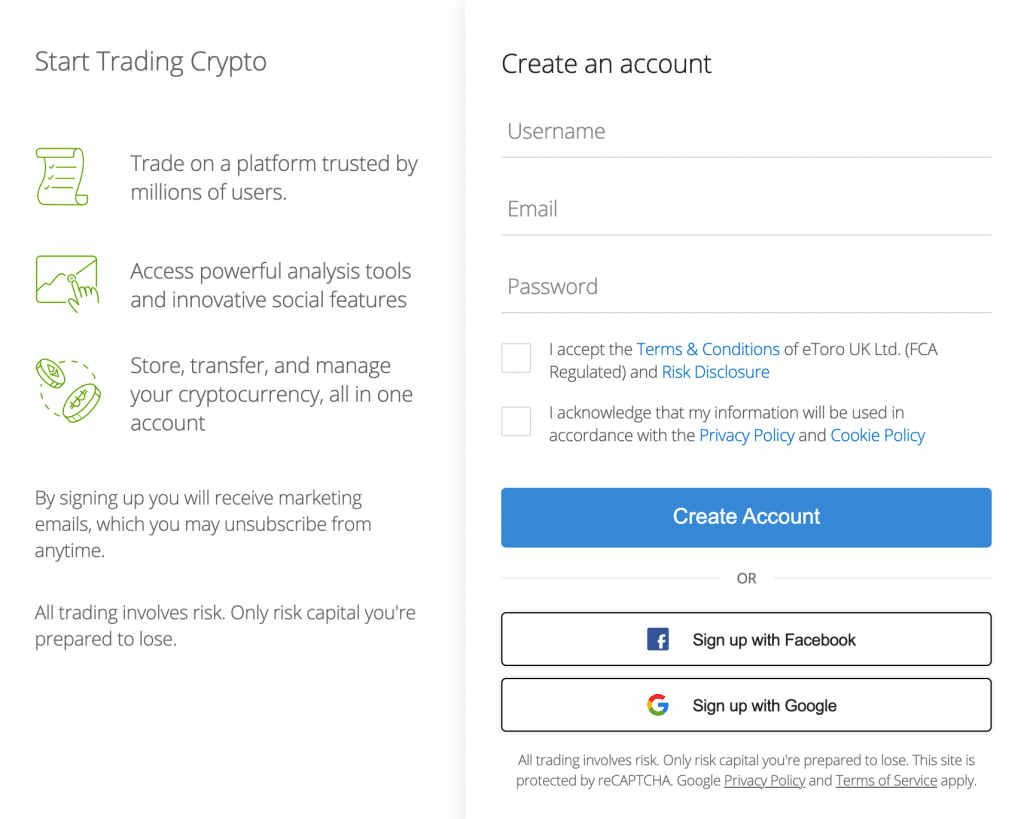
67% of retail investor accounts lose money when trading CFDs with this provider.
Once you sign up, you will have a brokerage account instantly but this is not enough. You will actually need to get it verified so that it can be used for trading purposes. Account verification requires a few personal documents and takes approximately 15 minutes or less. Simply, provide a photo ID (passport, driving licence) and proof of address (bank statement, utility bill), and if everything goes nominally your account should be verified very soon.

After having a verified account, you will be one step closer to buying and selling financial assets on the brokerage platform. All that’s left is to top-up your brokerage account with some funds. You can deposit funds without any fees by using many different payment methods on eToro. Just click on “Deposit Funds” and enter the amount you want to deposit for trading or investing. Then press “Deposit” and your funds will be transferred. eToro offers are credit/debit cards, e-wallet (PayPal, Skrill, etc), and bank transfer as well as other convenient payment options.
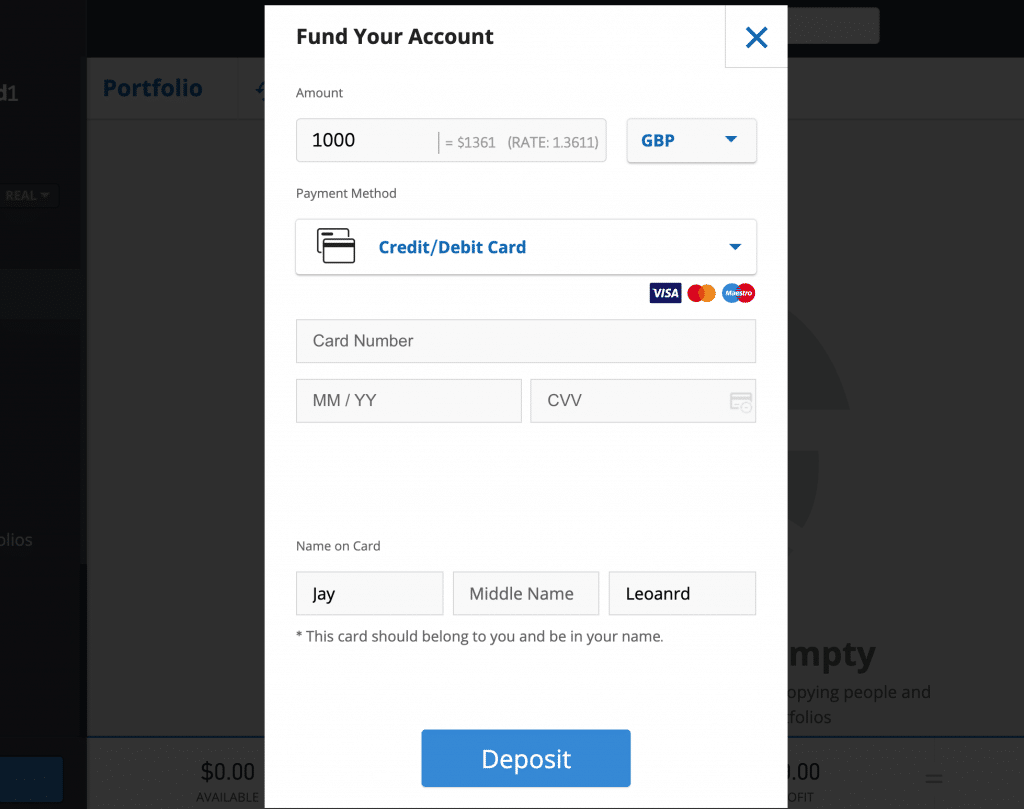
Once your eToro account is funded, you will be allowed to start trading on the platform. If your focus is passive investing some options will be to buy risk-optimized and diversified assets such as EFTs and hold them for long periods. In this case, it will be wise to check the overnight carrying fees for the specific asset if they exist. To buy a CFD on eToro, just type the name of an index or stock into the eToro search bar, press “Trade” and proceed with the amount you’d like to invest by pressing “Buy”. Good luck with passive investing!
In this article, we discussed passive investing strategies for Australian traders and elaborated on some of the advantages this strategy brings to the table. While this powerful investing strategy is favoured by many great investors, it’s always crucial to know financial trading and investing tools and to have a reliable platform that can be used to execute buy and sell orders.
eToro, Spreadex, and easyMarket are well-reputed and renowned platforms that can be useful for carrying out passive investing strategies in Australia. An important tip in this regard is to ensure the security of the broker. You should consider the broker’s administrative body and regulatory status before investing to avoid security and privacy issues. We recommend eToro as a trusted and well-regulated platform used by millions of traders while ensuring your security and privacy.